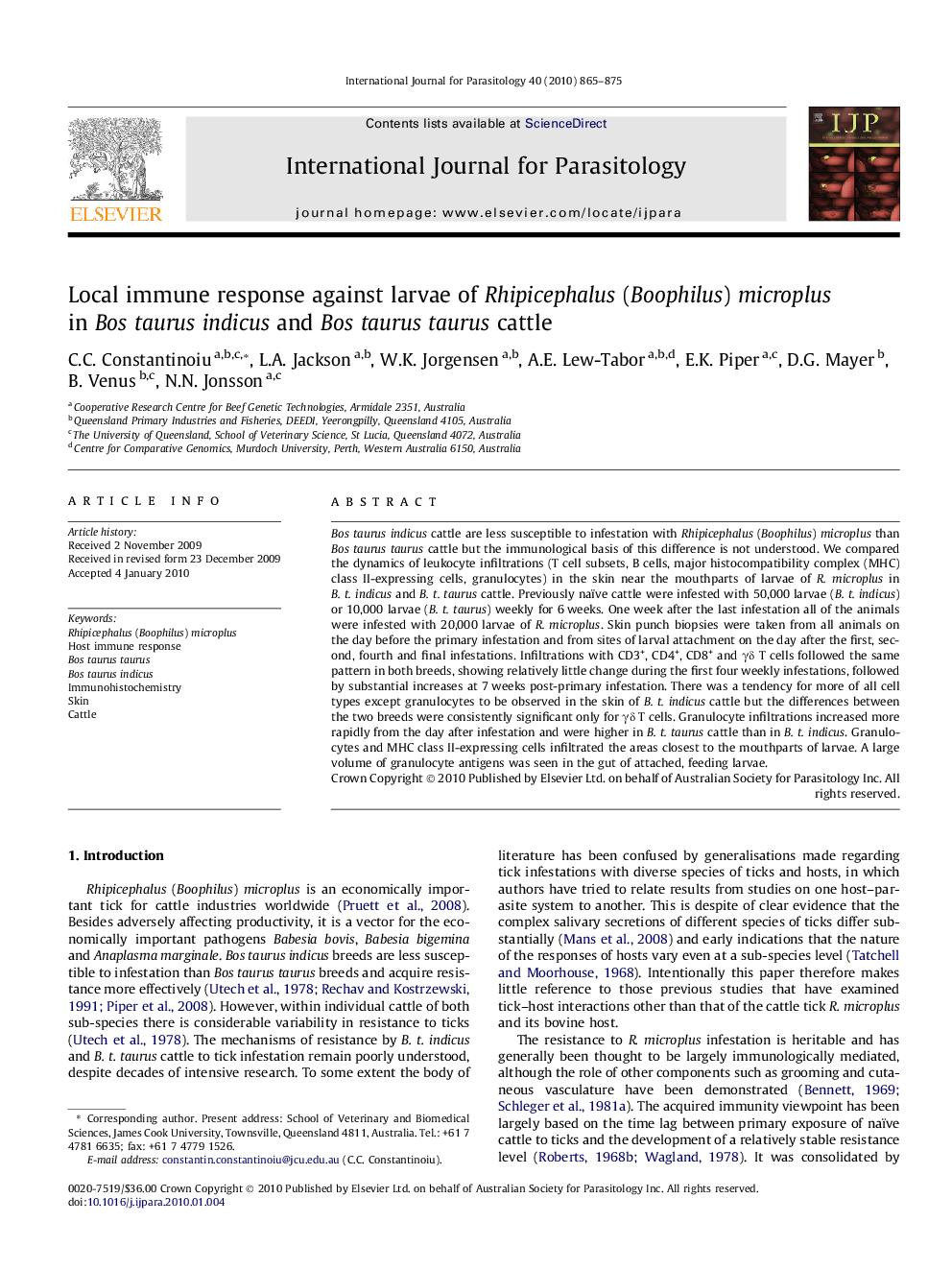| کد مقاله | کد نشریه | سال انتشار | مقاله انگلیسی | نسخه تمام متن |
|---|---|---|---|---|
| 2436477 | 1107315 | 2010 | 11 صفحه PDF | دانلود رایگان |

Bos taurus indicus cattle are less susceptible to infestation with Rhipicephalus (Boophilus) microplus than Bos taurus taurus cattle but the immunological basis of this difference is not understood. We compared the dynamics of leukocyte infiltrations (T cell subsets, B cells, major histocompatibility complex (MHC) class II-expressing cells, granulocytes) in the skin near the mouthparts of larvae of R. microplus in B. t. indicus and B. t. taurus cattle. Previously naïve cattle were infested with 50,000 larvae (B. t. indicus) or 10,000 larvae (B. t. taurus) weekly for 6 weeks. One week after the last infestation all of the animals were infested with 20,000 larvae of R. microplus. Skin punch biopsies were taken from all animals on the day before the primary infestation and from sites of larval attachment on the day after the first, second, fourth and final infestations. Infiltrations with CD3+, CD4+, CD8+ and γδ T cells followed the same pattern in both breeds, showing relatively little change during the first four weekly infestations, followed by substantial increases at 7 weeks post-primary infestation. There was a tendency for more of all cell types except granulocytes to be observed in the skin of B. t. indicus cattle but the differences between the two breeds were consistently significant only for γδ T cells. Granulocyte infiltrations increased more rapidly from the day after infestation and were higher in B. t. taurus cattle than in B. t. indicus. Granulocytes and MHC class II-expressing cells infiltrated the areas closest to the mouthparts of larvae. A large volume of granulocyte antigens was seen in the gut of attached, feeding larvae.
Figure optionsDownload high-quality image (147 K)Download as PowerPoint slide
Journal: International Journal for Parasitology - Volume 40, Issue 7, June 2010, Pages 865–875